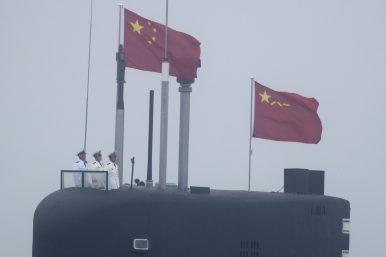By Ankit Panda
Tensions between the United States and China are resurgent in May over the issue of trade as long-standing negotiations between the two sides fall apart.
At the same time, the U.S. Department of Defence’s release of an annual report on Chinese military capabilities for American lawmakers has drawn attention to China’s ongoing military modernization and expansion.
This year’s report mostly continues to discuss trends that have been highlighted in recent years, with a focus on Beijing’s use of espionage to steal military intellectual property, its growing expeditionary capabilities – including the development of a second indigenous aircraft carrier – and investment in emerging technologies.
The Pentagon’s report makes clear that the U.S. sees Chinese initiatives in the Xi Jinping era, such as the “Belt and Road Initiative” and “Made in China 2025”, as strategic and economic threats.
“China’s leaders have softened their rhetoric when promoting these programmes without altering the programmes’ fundamental strategic goals,” it said.
This much was apparent at the second Belt and Road Forum, when Xi emphasised that China’s objectives were positive-sum in nature.
The Trump administration has openly recognised the competitive nature of relations with China, and military-to-military contacts with Beijing have frayed since the years of the Obama administration.
Last year, China was disinvited from the Rim of the Pacific multilateral naval exercise over Beijing’s militarization of features in the South China Sea.
China’s leaders’ use of these “tactics short of armed conflict”, as the report called them, has drawn concern for years.
The U.S., regional powers and like-minded countries have faced a serious challenge trying to deter Beijing’s fait accompli in the Indo-Pacific. The Trump administration hasn’t cracked that problem quite yet.
The U.S. report has also underscored ongoing nuclear developments in China’s military. For the first time, the report confirmed the existence of six constructed Type 094 ballistic missile submarines, the cornerstone of China’s sea-based nuclear deterrent.
Separately, the report clarified that while China’s air force, for the first time since the late 1970s or early 1980s, has a nuclear mission, it does not have any actively fielded nuclear capabilities.
That capability will come in the next few years as the air force tests and deploys a new strategic air-launched ballistic missile known to the U.S. intelligence community as the CH-AS-X-13.
Nothing in the report, importantly, shores up the hypothesis that appears to be growing in the Trump administration concerning Beijing’s involvement in strategic trilateral arms control talks with the U.S. and Russia.
Rejected by China’s foreign ministry in early May, the idea fails to grapple with the sheer quantitative divergences between the Chinese, Russian and American nuclear arsenals – a fact the Pentagon report highlights.
Moreover, given China’s nondeployment of warheads on missiles during peacetime, a new arms control arrangement in the style of the Strategic Arms Reduction Treaty (Start), would effectively count Beijing’s deployed warheads as zero – or perhaps a handful – if some warheads were deployed on submarines.
Importantly, the Pentagon’s view that a Taiwan Strait contingency remains the most likely warfighting scenario for the People’s Liberation Army – a view supported by official Chinese sources – has not changed.
In particular, in recent years, Beijing’s relationship with the Democratic Progressive Party-led Taiwanese government has been acerbic, resulting in Taipei’s loss of three diplomatic allies in 2018 alone.
In the meantime, the PLA has continued to develop capabilities that would augment its ability to penetrate Taiwan’s robust anti-access capabilities.
What is clear is that the military dimensions of U.S.-China competition remain as serious as ever, even as tensions over trade begin to compound.
Conflict between the two countries is not an inevitability and predicting a clash along the lines of the Thucydides Trap – a term for the idea that the rivalry between an established power and a rising one often ends in war – is an oversimplification.
Nevertheless, China’s impressive continuing military modernization at a time of growing overt competition presents a formidable challenge to the U.S. in preserving its place atop the Indo-Pacific.
This article first appeared in the South China Morning Post. It is republished here with kind permission.

No comments:
Post a Comment